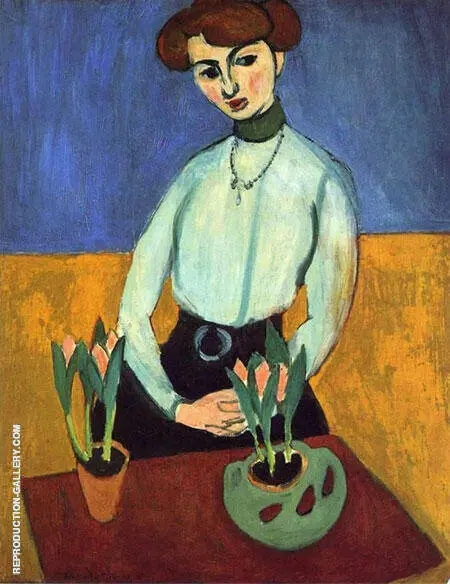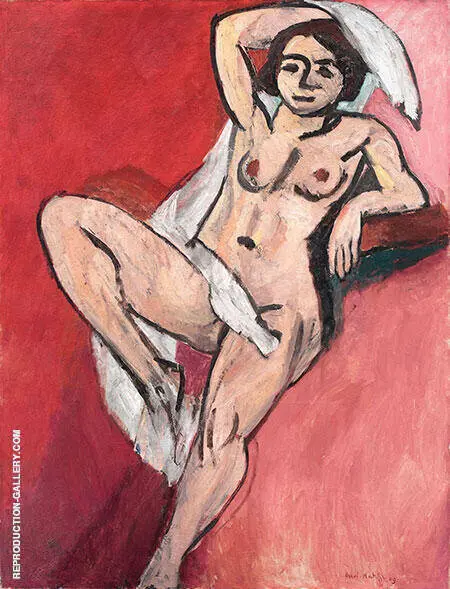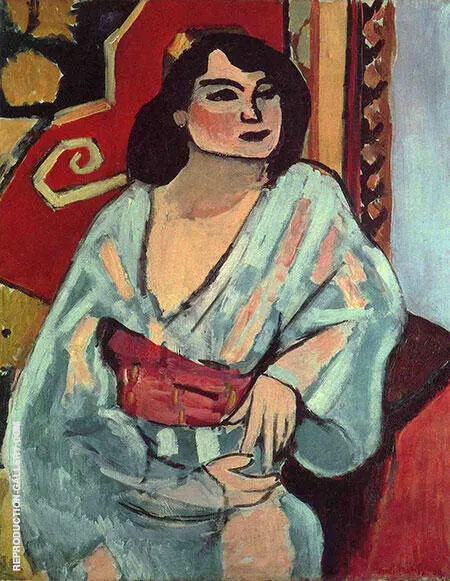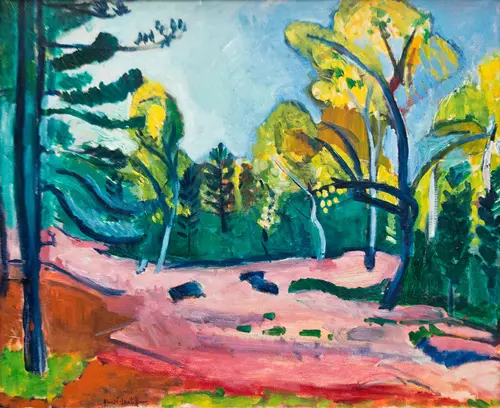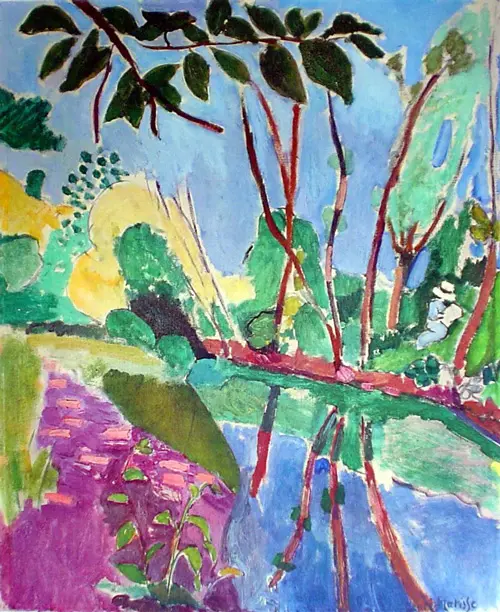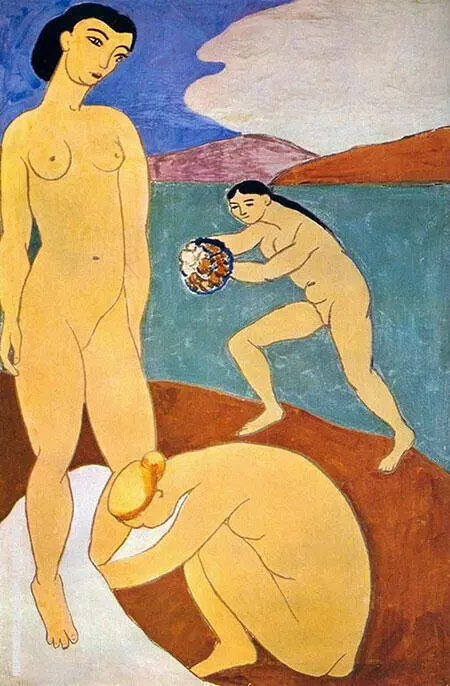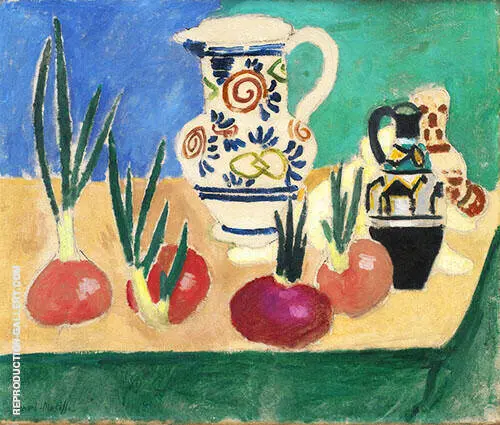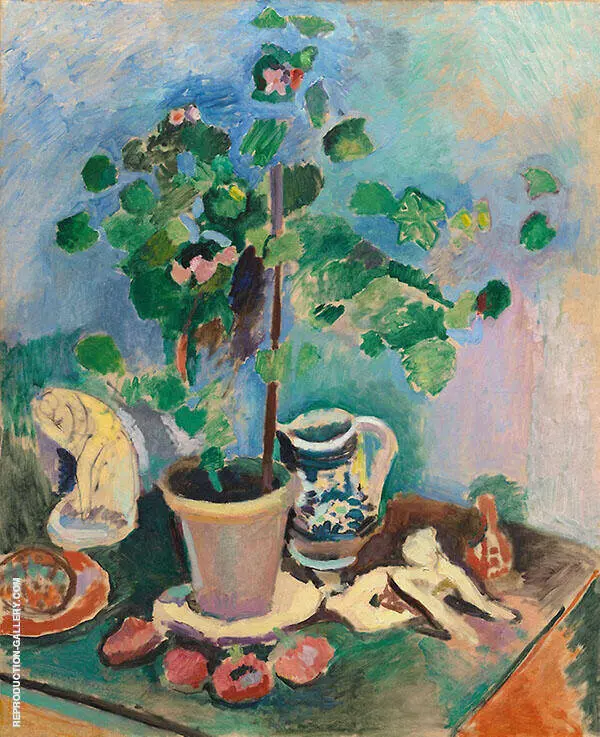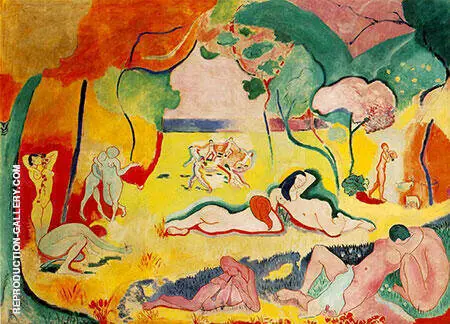Fauvism Oil Painting Reproductions
Find Fauvism Oil Painting Replicas by Fauvism Artists
Fauvism Paintings: A Brief Introduction
Fauvism paintings come from a colorful, creative European art movement. Leading figures included artists such as Henri Matisse and André Derain.
While the movement only lasted from 1905-10, it profoundly changed artistic production. Indeed, the fauvist paintings still influence art and artists today.
With this in mind, we explore this exciting yet controversial art style explaining the meaning of “Les Fauves” and introducing some of the most famous Fauvism artists.
What is the meaning of Les Fauves?
Les Fauves means “wild beasts.” The art critic Louis Vauxcelles created the name in response to a pioneering exhibition. The show was the Salon D’Automne (in Paris) of 1905. Participating artists included Henri Matisse and André Derain.
These two artists spent the earlier summer working in the town of Collioure, in the South of France. The paintings produced in this coastal town were bold, bright, and expressive. Matisse and Derain’s colorful paintings completely ignored the traditional rules of French academic painting.
Consequently, when Vauxcelles saw their work, he said it was like “Donatello among the wild beasts.” This observation contrasted classical Renaissance art sculptures (also appearing in the same room) with these vibrant, almost child-like paintings.
Why is it called the Fauvism Art Movement?
Although Henri Rousseau wasn’t a fauvist artist, his painting The Hungry Lion Throws Itself on the Antelope appeared in the same room as Matisse and Derain. As a result, scholars think this jungle scene influenced Vauxcelles’ choice of words.
The critic’s exhibition write-up appeared in Gil Blas (a popular daily newspaper) on 17 October 1905. After this date, the term gained widespread usage. Other critics adopted the phrase and Vauxcelles’ angry condemnation.
Indeed, another critic (Camille Mauclair) claimed that Fauvism artists had thrown “a pot of paint” in the “face of the public.”
Matisse’s Woman with a Hat was particularly singled-out for critical disdain. Nonetheless, Gertrude and Leo Stein (famed American art collectors) bought the work. The sale emboldened Matisse and supplied a burst of creative energy amid ongoing poor critical reception.
What does Fauve mean in art?
The word “Fauve” refers to members of the Fauvism artistic movement. Its leaders included Henri Matisse, André Derain, and Maurice de Vlaminck.
In addition, Les Fauves also included artists such as Georges Braque (who later turned to Cubism) and Kees van Dongen. Jean Metzinger, Raoul Dufy, and Albert Marquet were also members.
These artists launched three exhibitions together. These shows included their inaugural collection of 1905 and two later displays of 1906.
What are the three main characteristics of Fauvism?
The three main characteristics of Fauvism paintings include:
- Painterly, expressive, and wild brushstrokes.
- Rich and bright color. Artists favored bright tones over strictly “realist” representation.
- Paintings are heavily simplified and often abstract compositions.
These characteristics appear in colorful art such as Portrait of Madame Matisse and The Green Stripe 1905. With this painting, Matisse’s heavy impasto technique creates energy and dynamism throughout the canvas.
Instead of black or gray shadows, Madame Matisse’s eyes shine out from bright green shades. Yellow and pink tones dominate her face, while her hair is vivid blue. Other Matisse works, such as Red Room 1908, demonstrate his simplified and decorative backgrounds.
What are the main characteristics of Fauvism paintings?
Fauvism paintings often have bright colors, energetic brushstrokes, and simplified compositions. Many scholars describe Fauve’s art as an extension of Vincent van Gogh’s post-impressionist experimentation. It also borrows from the pointillism (a technique using small dabs of color) of Georges Seurat.
Painters such as Paul Gauguin and Paul Cézanne also influenced the movement. Indeed, Gauguin’s flat areas of plain color inspired Derain’s Collioure work. The red trees and yellow paths of Turning Road L’Estaque owe a substantial debt to Gauguin’s art.
Some Fauvism artists also collected African, Oceanic, and folk art, borrowing ideas and styles from these objects. These collections were the first time European artists seriously explored paintings and sculptures from other cultures. It also led to Cubism’s development, which began around 1907 with Picasso’s Les Demoiselles d’Avignon.
Henri Matisse - Famous Paintings
Among Fauvism artists, Henri Matisse paintings are the most famous and popular choice of replica paintings. While Gustave Moreau inspired the movement’s early development, from 1904 onwards, Matisse led the group. Regarding Gustave Moreau’s influence, Matisse commented, “he did not set us on the right roads” but was “off the roads.” Indeed, Moreau taught at the prestigious École des Beaux-Arts in Paris, inspiring a generation of painters. Matisse praised his open-mindedness and love of pure color.
After the 1905 Salon d’Automne, the Fauvist artists exhibited together at the Salon des Indépendants in 1906. Again, Matisse’s painting Le Bonheur de Vivre, also known as The Joy of Life, formed the central exhibit.
As before, critics remained horrified by Matisse’s flat perspective, bright, unrealistic colors, and uneven technique.
Matisse’s painting also borrowed heavily from Paul Cézanne’s Bathers series. Cézanne’s influence is apparent in the triangular composition and monumental nude bodies.
What are eight famous Fauvism paintings?
Here are eight famous fauvism paintings from some of the leading fauvist artists:
1. Raoul Dufy, The Provence Landscape 1905
A French landscape oil painting that exudes a riot of color.
2. Henri Matisse, Open Window Collioure 1905
Matisse’s famous painting shows his interest in color theory.
3. Henri Matisse, View of Collioure 1905
Gentle pinks, purples, and blues form this iconic harbor-side view.
4. Georges Braque, House Behind the Trees c1906
A rare glimpse into George Braque’s early style.
5. Robert Delaunay, Portrait of Jean Metzinger 1906
A mixture of fauvist and divisionist styles.
6. Andre Derain, Estaque the Harbor 1906
One of Derain’s many images shows the landscape around L’Estaque in Southern France.
7. Jean Metzinger, Woman with a Hat 1906
Reminiscent of Matisse’s Woman with a Hat.
This oil painting also demonstrates his early interest in Cubist forms.
8. Maurice de Vlaminck, The River Seine at Chatou 1906
A beautiful river-side scene depicts boats and barges sailing past.
Fauvism paintings: Museum quality oil painting on canvas
If you love colorful paintings and the energy of Fauve art, explore our extensive collection of colorful wall art.
Enjoy discovering fine art reproduction by famous artists.
Cannot Find What You Are Looking For?
Reproduction Gallery Information
Customer Service
(Send Us A Message)
Tel: (302) 513 3464


